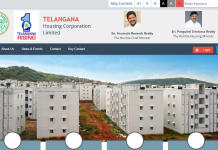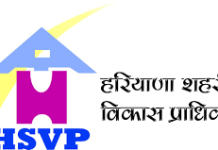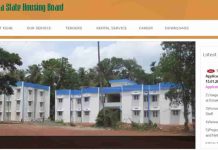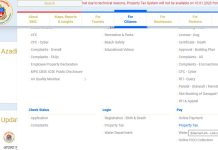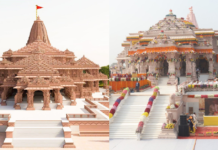Introdution
he Agra-Lucknow Expressway is a 302 km long access-controlled expressway in Uttar Pradesh, India has significant infrastructure project that enhances connectivity in Uttar Pradesh, India. Spanning 302 kilometers (187.79 miles), this six-lane access-controlled expressway connects the historic city of Agra, known for the iconic Taj Mahal, to the vibrant capital, Lucknow. Inaugurated on November 21, 2016, the expressway has revolutionized travel by reducing the journey time between these two cities from approximately 6 hours to just 3.5 hours
Agra Lucknow Expressway: Highlights
| Features | Details |
|---|---|
| Length | 302.22 km (187.79 mi) |
| Inauguration Date | 21 November 2016 |
| Connection | Connects Agra and Lucknow |
| Reduced Travel Time | Travel time between Lucknow and Agra reduced from 6 hours to approximately 3.5 hours |
| Cost and Time | Initially expected to cost ₹15,000 crore, completed at ₹13,200 crore in 22 months |
| Development Model | Flagship model of development in Uttar Pradesh |
The Agra-Lucknow Expressway is a significant infrastructure project in Uttar Pradesh, India, designed to enhance connectivity between Agra and Lucknow. Here are the key details:
Overview
- Length: The expressway spans approximately 302.22 kilometers (about 187.79 miles).
- Lanes: It is constructed as a 6-lane road, with plans for future expansion to 8 lanes.
- Cost: The project was completed at a cost of ₹11,527 crore (approximately $1.4 billion), excluding land costs.
- Inauguration: The expressway was inaugurated on November 21, 2016, by then Chief Minister Akhilesh Yadav and opened to the public in December 2016.
Route and Connectivity
The expressway begins at Etmadpur Madra village near Agra and ends at Sarosa Bharosa village near Mohan Road in Lucknow. It passes through several districts, including:
- Firozabad
- Mainpuri
- Etawah
- Auraiya
- Kannauj
- Kanpur Nagar
- Hardoi
- Unnao
The expressway significantly reduces travel time between Agra and Lucknow from approximately 5.5 hours to 3 hours. It also connects to the Yamuna Expressway, facilitating access to New Delhi.
Features
- Speed Limit: The design speed is up to 120 km/h for cars, while heavy vehicles are limited to 60 km/h. There are strict speed regulations, with penalties for those completing the journey in under three hours.
- Traffic Management: The expressway is equipped with an advanced traffic management system, including CCTV cameras, emergency call boxes, and speed detection systems to ensure safety and compliance with traffic rules.
- Rest Areas: There are designated rest areas along the route for travelers, strategically located at key milestones.
Safety and Amenities
- Traffic Management: Equipped with an Advanced Traffic Management System featuring:
- 152 emergency call boxes located every 4 km
- 50 CCTV cameras for surveillance
- Speed and number plate detection systems to monitor compliance with speed limits
- Rest Areas: There are designated rest areas with amenities for travelers, including food and fuel stations.
- Emergency Services:
- 10 ambulances stationed approximately every 30 km for quick medical assistance.
- Mobile workshops for vehicle repairs on-site.
- 24/7 patrolling by police vehicles equipped with emergency response capabilities.
Also read: Purvanchal Expressway : Complete Guide to Toll, Route, Map and Benefits
Infrastructure Components
- Bridges and Underpasses: The expressway includes:
- 4 rail overbridges
- 13 major bridges
- 57 minor bridges
- 74 vehicular underpasses
- 148 pedestrian underpasses
- 9 flyovers
- Access Control: It is an access-controlled expressway with limited entry and exit points to enhance safety and traffic management.
Agra Lucknow Expressway Route Map
The Agra-Lucknow Expressway spans approximately 302 kilometers, connecting Agra and Lucknow in the state of Uttar Pradesh. The expressway route passes through several key districts:
- Agra: The expressway begins at Etmadpur Madra village near Agra.
- Firozabad
- Mainpuri
- Etawah
- Auraiya
- Kannauj
- Kanpur Nagar
- Hardoi
- Unnao
- Lucknow: The expressway ends at Sarosa Bharosa village near Mohan Road in Lucknow.

source:Infrainfohub
The route map shows that the expressway connects major cities and towns in western and central Uttar Pradesh, facilitating efficient travel between Agra and Lucknow. It also provides a crucial link to the Yamuna Expressway via the Agra Ring Road, allowing for direct access to Greater Noida and the National Capital Region (NCR) of Delhi
Agra lucknow expressway Exit points
Along the route, there are 7 main exits providing access to various towns and cities:
| Exit Location | Distance from Agra (km) | Cumulative Distance (km) |
|---|---|---|
| Agra | 0 | 0 |
| Firozabad | 24 | 24 |
| Shikohabad | 45 | 70 |
| Etawah | 17 | 87 |
| Kannauj | 80 | 167 |
| Bangarmau | 83 | 250 |
| Lucknow | 40 | 290 |
Summary of Exit Points:
- Agra: The expressway begins at Etmadpur Madra village near Agra.
- Firozabad: Located 24 km from Agra.
- Shikohabad: 45 km from Agra, providing access to local areas.
- Etawah: 17 km from Shikohabad, further connecting to regional routes.
- Kannauj: 80 km from Etawah, known for its historical significance.
- Bangarmau: 83 km from Kannauj, serving as another access point.
- Lucknow: The expressway ends at Sarosa Bharosa village near Mohan Road in Lucknow, approximately 290 km from Agra.
Economic Impact
- Connectivity: The expressway connects key cities in Uttar Pradesh and links to the Yamuna Expressway, facilitating travel to Delhi and reducing travel time between Agra and Lucknow to approximately 3.5 hours.
- Development Initiatives: It aims to foster economic growth by improving access for farmers and attracting investments to the region, thereby enhancing overall regional development.
These features collectively make the Agra-Lucknow Expressway a vital infrastructure project, improving transportation efficiency and contributing to the economic development of Uttar Pradesh
Also read: Purvanchal Expressway : Complete Guide to Toll, Route, Map and Benefits
Expansion Plans for the Agra Lucknow Expressway
The Uttar Pradesh government has announced plans to further expand and enhance the Agra-Lucknow Expressway in the coming years:
Connecting to the Purvanchal Expressway
- Announced: During the UP state budget presentation for FY 2024-25 on February 5, 2024
- Budget allocated: ₹500 crore
- Initiative: The new road project aims to connect the Agra-Lucknow Expressway with the Purvanchal Expressway, linking two of the busiest expressways in the state and enhancing overall connectivity.
Expansion to 8 Lanes
- The expressway is currently a 6-lane access-controlled highway, but it has been designed for future expansion to 8 lanes.
- The structures like bridges and underpasses on the expressway are already being constructed as 8-lane to accommodate the expanded width in the future.
Improving Connectivity to Delhi
- The new linking road project between the Agra-Lucknow Expressway and Purvanchal Expressway is also expected to enhance connectivity between Delhi and cities in eastern Uttar Pradesh.
- The expressway is connected to the Yamuna Expressway through the Agra Ring Road, providing a crucial link to Delhi and the National Capital Region (NCR)
Agra lucknow expressway toll charges:
The toll charges for the Agra-Lucknow Expressway, effective from April 1, 2024, are as follows:
| Vehicle Type | Toll Charge (₹) |
|---|---|
| Light Motor Vehicles | 655 |
| Light Commercial Vehicles | 1,035 |
| Buses/Trucks | 2,075 |
| Heavy Construction Machinery | 3,170 |
| Large Vehicles (more than 7 axles) | 4,070 |
Additionally, there have been slight increases in toll rates for some categories, such as heavy vehicles, which will now incur a charge of ₹4,095 instead of ₹4,070. For two-wheeled vehicles, the toll has increased from ₹315 to ₹325, and for three-wheeled commercial vehicles, it has risen from ₹345 to ₹355.
The new linking road between the Agra-Lucknow Expressway and the Purvanchal Expressway is expected to benefit several key industries significantly:
1. Manufacturing
- Accessibility to Markets: Enhanced connectivity will allow manufacturing firms to transport raw materials and finished goods more efficiently, reducing logistics costs and time.
- Increased Production Capacity: Manufacturers can scale operations by accessing larger markets, leading to potential increases in production and employment.
2. Logistics and Transportation
- Freight Movement: The logistics sector will benefit from improved road infrastructure, facilitating faster and more reliable transportation of goods.
- Supply Chain Efficiency: Companies involved in logistics will experience reduced transit times, enhancing supply chain efficiency and reliability.
3. Agriculture
- Market Access: Farmers will gain better access to urban markets, allowing them to sell their products more efficiently and potentially increasing their income.
- Input Supply: Improved infrastructure will facilitate the timely delivery of agricultural inputs, such as seeds and fertilizers, enhancing productivity.
4. Retail and Consumer Goods
- Distribution Networks: Retailers will benefit from improved distribution networks, enabling them to reach customers more effectively and expand their market reach.
- Increased Consumption: As disposable incomes rise due to economic growth, demand for consumer goods is expected to increase, benefiting retailers.
5. Construction and Real Estate
- Increased Development: The linking road is likely to spur real estate development along its corridor, leading to new residential and commercial projects.
- Investment Opportunities: Improved infrastructure will attract investments in construction and related sectors, boosting local economies.
6. Tourism
- Accessibility to Attractions: Enhanced road connectivity can promote tourism by making it easier for visitors to access cultural and historical sites in the region.
- Infrastructure Development: The tourism sector may see investments in hospitality and related services, driven by increased visitor numbers.
7. Service Sector
- Support Services: Industries such as IT, finance, and hospitality will benefit from increased economic activity and demand for services in newly developed areas along the expressway.
The Agra-Lucknow Expressway is not only a vital transportation corridor but also passes by several notable landmarks and attractions that travelers can explore. Here are some major landmarks and attractions along the expressway:
Major Landmarks and Attractions: Agra lucknow expressway
- Taj Mahal, Agra
- Although not directly on the expressway, the Taj Mahal is a world-renowned UNESCO World Heritage site located in Agra, just a short drive from the expressway’s starting point.
- Maharaja Tej Singh Fort, Mainpuri
- A historical fort that showcases the architectural heritage of the region, offering insights into the local history and culture.
- Crystal Water Park, Firozabad
- A popular amusement park featuring water slides and pools, making it an ideal stop for families looking for recreational activities.
- Om Shree Ganesh Food Plaza, Paliya
- A well-known stop for travelers offering quick snacks and local delicacies, perfect for a refreshing break.
- Shiva Hotel & Restaurant, Karhal Cut
- A family-friendly dhaba serving traditional Indian dishes, providing a taste of local cuisine.
- Food King Plaza, Kathua
- A food court on the expressway with various dining options, catering to different tastes from snacks to full meals.
- Agricultural Mandis
- Various agricultural markets (mandis) along the route facilitate the trade of local produce, reflecting the agricultural significance of the region.
- Rest Areas and Service Stations
- Numerous rest areas equipped with amenities such as fuel stations, washrooms, and eateries are available at regular intervals, ensuring a comfortable journey for travelers.
Cultural and Natural Attractions
- Green Belt Development: The expressway features a green belt with trees planted along its sides, contributing to the ecological balance and providing a scenic view during the drive.
- Rivers: The expressway crosses several rivers, including the Ganga and Yamuna, offering picturesque views and opportunities for photography
Frequently Asked Questions:
The Agra-Lucknow Expressway spans approximately 302 kilometers (about 187.79 miles)
Toll charges vary by vehicle type, with light motor vehicles (cars) charged around ₹655 and heavy vehicles (buses/trucks) around ₹2,075
Peak hours generally occur during morning (7 AM – 10 AM) and evening (5 PM – 8 PM) rush hours, when traffic volumes are highest.
Notable landmarks include the Taj Mahal, Maharaja Tej Singh Fort, Crystal Water Park, and various rest areas and food plazas
Yes, the expressway is designed with safety features, including an advanced traffic management system, CCTV surveillance, and emergency services.
Suggested Articles:
Purvanchal Expressway : Complete Guide to Toll, Route, Map and Benefits
National Highway 152D : Ambala-Narnaul Expressway – TransHaryana Expressway
Mumbai Pune Expressway: A complete Guide to Six-Lane Expressway






